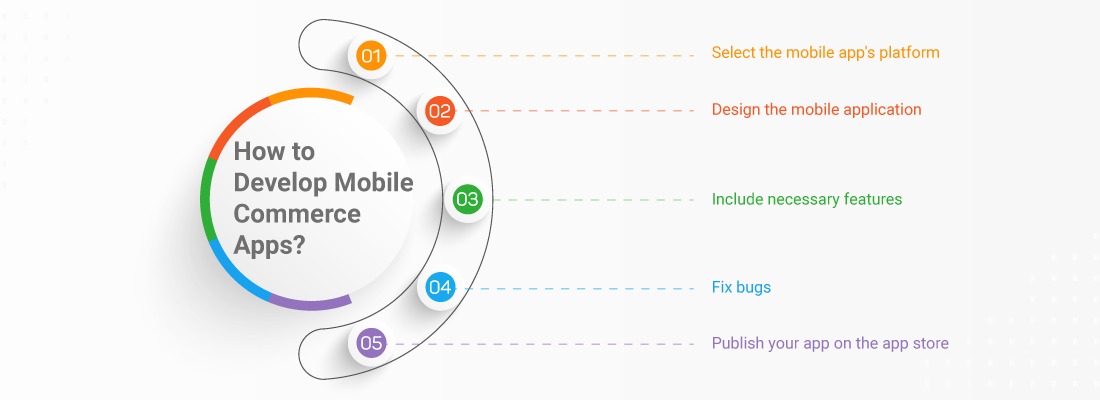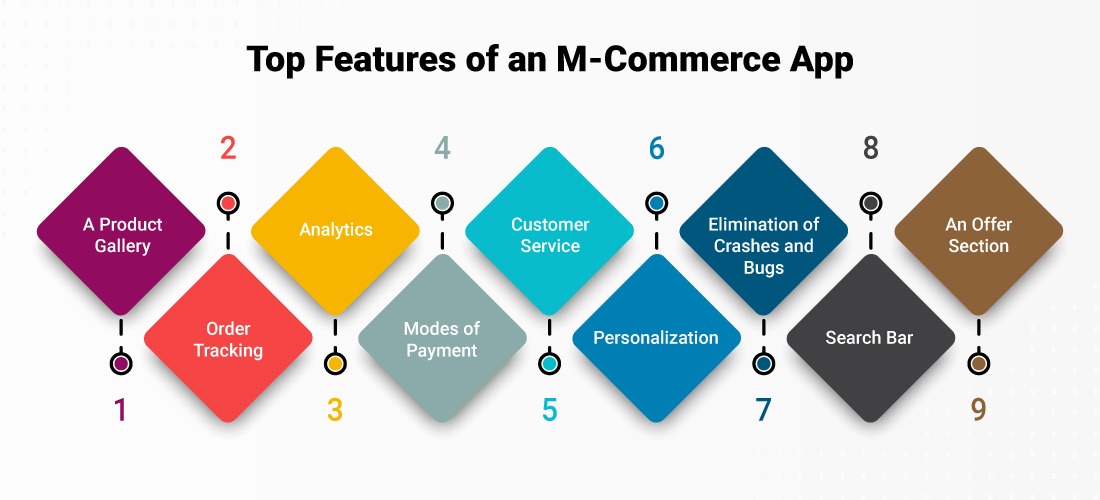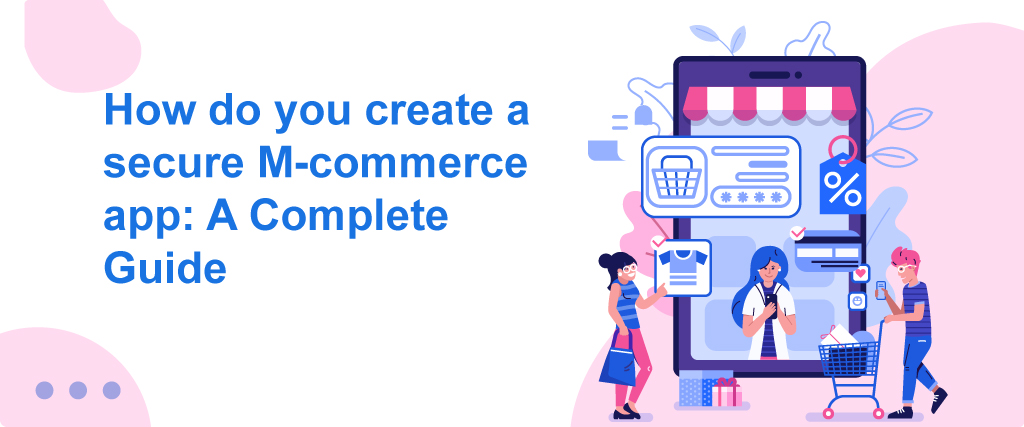An app’s development and security upkeep work hand in hand.
The security of the app is therefore a need when it comes to mobile commerce apps.
The expansion of m-commerce has increased over the past few years, but that doesn’t guarantee that every app will be a hit on the market.
One of the numerous potential causes of m-commerce applications failing is a lack of security.
If there are any threats, users won’t hesitate to fully abandon the mobile commerce app.
The growth of mobile commerce has completely changed how people shop online.
Some of the main benefits of employing mobile commerce technologies are the variety of products, ease of browsing, and comparison shopping before making a purchase.
What do Stats Say About MCommerce Market Growth?
The global m-commerce market is expected to reach a valuation of $3,901 billion by the end of 2026, expanding at a CAGR of 34.9%, giving the eCommerce business many advantages.
The growing demand for smartphones is causing the e-commerce sector to expand.
Everyone’s life now revolves around their smartphone. According to estimates, cell phones account for close to 55% of e-commerce traffic.
Additionally, according to a recent prediction, US retail m-commerce sales would total about $710 billion by 2025, up from $360 billion in 2021.
A retail app is almost universally present on smartphones.
In addition, the increasing popularity of online shopping among consumers is a factor in the expansion of the Mcommerce market.
What is the average time it takes to create a mobile commerce application?

The process of creating a mobile commerce app is not quick or easy.
Advanced planning and a lot of resources are needed. However, a concise explanation of the phases that make up the entire process is possible.
Step 1:
Decide on the platform for the mobile app’s development.
Among the alternatives are the creation of iOS, Android, Windows, and other mobile applications.
Android has a sizable user base, whereas iOS users convert more frequently. Select the platform based on the goals of the company model.
Step 2:
The next stage is to design the mobile application.
The mobile commerce app design should incorporate aesthetically pleasing designs, straightforward animation, and legible typography.
Make sure the program doesn’t contain too many features, which could make it complicated.
Step 3:
The application must offer the features necessary for browsing, making purchases, and storing items for later purchases.
These are the qualities that draw users to an app.
Additionally, a customer is less inclined to use the application again if he cannot buy an item without running into any issues.
Step 4:
Upload your software to the app store and start marketing it before and after the launch.
Once the app is released, promotion is essential to ensure that it
gains as much momentum as possible.
Use all of the web marketing resources that are at your disposal.
Step 5:
Keep the app up to date by addressing bugs and adding new updates as required.
Make sure you give the app the attention it requires because both support and maintenance are crucial.
The app may get additional features included in updates that users may have requested.
These were the methods for developing a mobile commerce application that you may use to create your own mCommerce app.
Let’s look at how developers of mobile commerce apps protect their programs.
Key Characteristics of MCommerce Apps

Photo Gallery
The benefit of showcasing their goods in the most appealing way possible is a benefit of brick-and-mortar retailers.
With mobile commerce systems, this isn’t the case, so properly displaying the products is essential.
All the products will be displayed in a user-friendly manner in a product gallery. The likelihood that a user will purchase a product increases when it is attractively displayed.
Personalization
Nowadays, personalization is taken for granted. Personalization is present everywhere we go, which makes our work easier.
Additionally, a mobile app ought to be tailored to a user’s preferences, interests, and web browsing patterns. It should be possible for the user to conduct searches while filtering the search
results. These features improve user experience generally, which boosts engagement and purchases.
Order Monitoring
Allow customers to track orders once the product’s confirmation has been received.
Offer them distinct emails and messages in relation to this, and don’t forget to use push notifications to refresh the tracking information.
Real-time analytics make it easy for users and the business owner to monitor orders.
Removal of bugs and crashes
Every single crash or problem might actually drive consumers away from the app and push them to switch to another one.
Your m-commerce app’s cart abandonment rate will rise as a result, which will reduce income.
Analytics for mcommerce apps
When you are aware of what your customers want, you can better satisfy them.
If you can’t gather predictive analytics for mobile apps, all the benefits of creating a successful app will be for naught.
One benefit of m-commerce apps is that tools may be added to the app to gather different types of data, which can then be converted into information.
FAQs
1. What part does mcommerce play in the corporate world?
A. Mcommerce applications have a variety of traits that contribute to their prominence in the market, but the two most important ones are their ability to promote small and medium-sized businesses and increase revenue potential by marketing products globally.
2. List a few mcommerce app categories.
A. There are four main categories for mcommerce apps. These consist of:
● On-demand business
● mobile banking
Final thoughts
Regarding the future potential of mobile commerce apps, there is no question about their expansion.
According to the statistics, the growth of mobile commerce applications will soar in the future years, which also means that the revenue stream from such applications will rise.
The use of mobile messengers, chatbots, augmented reality (AR), single-click payment, marketing automation, and many other technologies are accelerating the industry’s business, making the future of mcommerce very promising.
Read More: E-COMMERCE TRENDS AND ITS IMPACT IN 2022
























